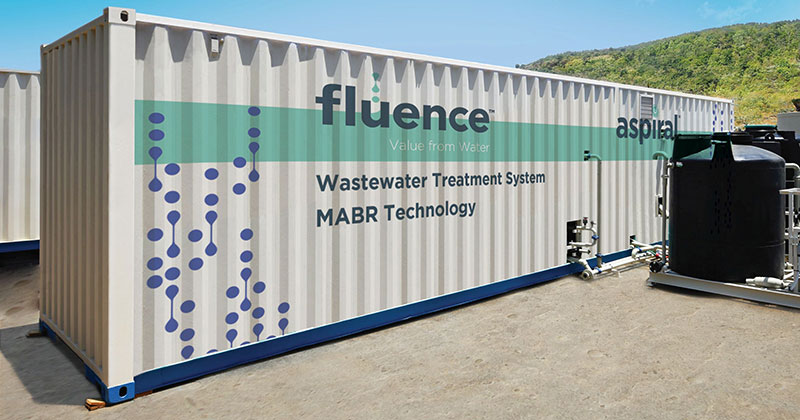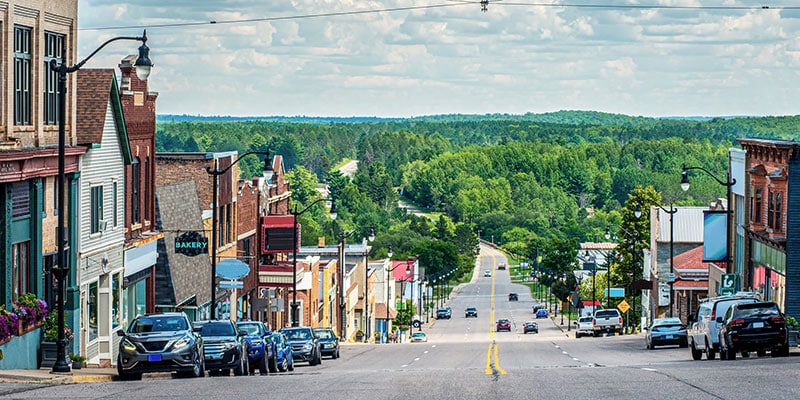Rather than guessing what water systems your town might need in the future, modular treatment allows you to start small and scale up in line with real demand.
Plan for housing booms or tourism surges with water and wastewater infrastructure that grows with you
The United States is experiencing a spurt in population growth. According to census estimates, it grew by 1% in 2024 and is increasing at the fastest pace in more than 20 years. While population increases are driving growth in regions such as Florida, international and local migration are contributing to unexpected population increases in many small towns across Iowa, Texas, Florida, and beyond. Families are relocating in search of affordable living, developers are investing in new housing to meet the growing demand, and seasonal tourist numbers are climbing.
For city managers, engineers, and utilities, this kind of growth is exciting and can be great for boosting tax revenue, but it adds pressure. Water and wastewater systems that were built for yesterday’s population may be inadequate to meet today’s demand. Without a plan in place, rapid development can lead to overwhelmed treatment facilities or costly overhauls.
How can municipalities prepare for growth by planning smart, scalable infrastructure without overextending their budgets or stalling development?
The Challenges of Planning for Uncertain Growth
Unlike major cities, small towns can be ill-prepared for unexpected growth spurts. In a small town, one new housing development can double a service area and put undue strain on water infrastructure. A newly popular hot spot can result in tourism surges that suddenly flood a community with new demand.
To compound the problem, many small towns have aging water and wastewater treatment infrastructure. Outdated lagoon systems or small-capacity plants aren’t easily updated, and smaller municipalities typically don’t have the capital to fund large infrastructure projects.
Because growth is unpredictable, the traditional “build it all now” approach can be risky and expensive. Build too little, and you’re constantly playing catch-up; build too much, and you’re left with the burden and expense of maintaining infrastructure you don’t yet need.
Why Overbuilding Isn’t the Answer
While it might seem safer to construct a large-scale treatment plant now that will continue to serve future needs, this approach has real risks, especially for small municipalities.
Traditional stick-built facilities constructed on-site are capital-intensive, time-consuming to permit and build, and often sized based on 20-year population projections. If growth happens more slowly than expected, or not at all, communities are left with high operating and maintenance costs, empty capacity, and debt.
Since these inflated costs must be recouped, overbuilding often results in higher utility fees or connection charges, discouraging the very development you’re trying to support. Instead of locking into a rigid, oversized system, it’s worth considering a more flexible, phased approach that aligns with current demand yet has the flexibility to add capacity should demand increase.
Introducing the “Build-As-You-Grow” Approach

Fluence’s Aspiral™ modular wastewater treatment plant delivers high-quality performance in a compact, containerized design, making it easy for small towns to add capacity quickly and cost-effectively as they grow.
Rather than guessing what your town might need years into the future, modular treatment systems allow you to start small and scale up over time. Technologies like Fluence’s Aspiral™ (which offers a decentralized wastewater treatment revolution for small towns and remote locations) and NIROBOX™ (a decentralized drinking water treatment solution for treating fresh water, brackish water, or seawater) are pre-engineered, containerized systems that can be deployed quickly and expanded as demand increases. That means there is no need to overbuild. You install what you need now and add capacity in phases as your service area grows.
These factory-tested, pre-built systems also help shorten permitting timelines, minimize on-site construction, and deliver high-quality treatment. Because they’re modular, instead of sinking costs into infrastructure that may not be fully used for years, you get right-sized infrastructure that supports growth without burdening your budget.
How to Get Started with Flexible Infrastructure
Flexible infrastructure planning starts with a shift in mindset, from planning based on population growth projections to planning for flexible growth. Here’s what we recommend.
- Partner with the right providers: Work with partners who understand municipal compliance and are experienced with permitting and funding programs like State Revolving Funds or build-own-operate (BOO) Fluence offers all of these, plus leasing options to avoid upfront capital costs.
- Use population scenarios, not static projections: Prepare for different growth scenarios so you’re not boxed in by a single forecast. Modular systems provide the flexibility to scale in phases to match real demand.
- Ask smart questions early: Does the vendor have a scale-up plan? How fast can the system be expanded if growth accelerates more quickly than expected? How do we maintain compliance as we scale?
- Ensure that the system has full lifecycle support: Through its Water Management Services, Fluence not only delivers the technology but also offers ongoing operational support, from permitting to expansion and remote monitoring, and long-term service to ensure optimal performance.
By shifting from static projections to adaptable strategies, municipalities can future-proof their infrastructure and avoid costly missteps.
Is Your Community Ready?
Whether your town is anticipating a major housing development, a tourism boom, or just steady growth, the key is having water and wastewater systems that grow with you. Don’t let outdated infrastructure delay progress. With modular, scalable treatment systems from Fluence, your community can stay ahead of demand without overspending or overbuilding.
Start planning today. Contact Fluence to explore how you can future-proof your infrastructure and keep your growth plans moving forward.

